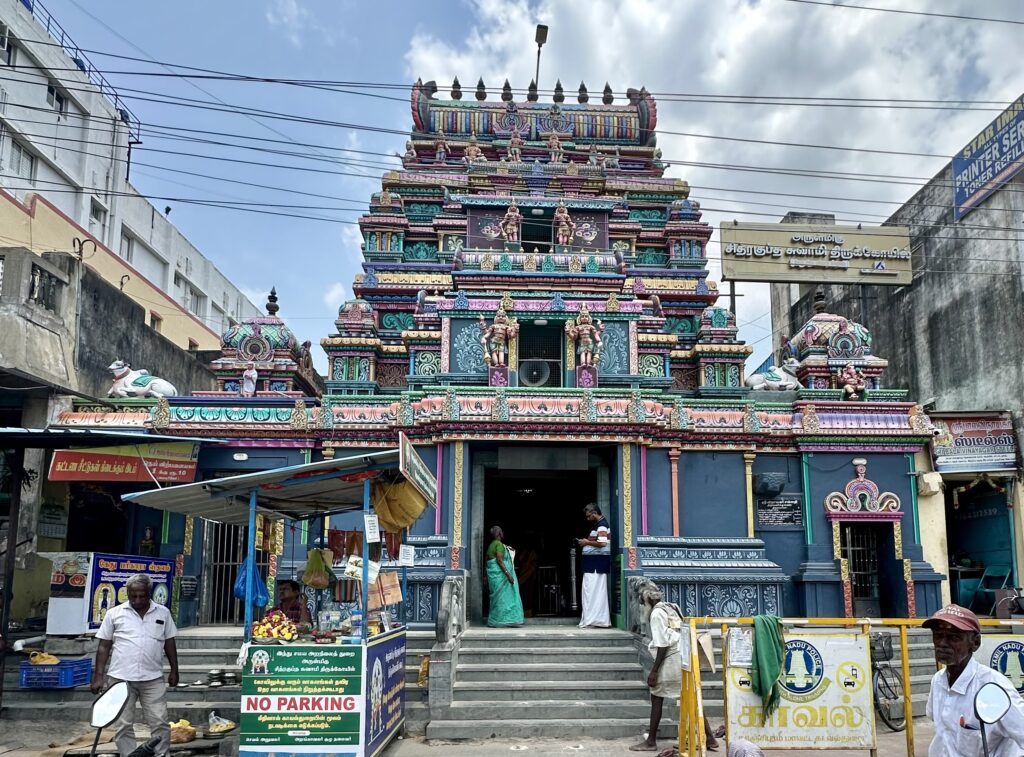Day trip from Chennai
Located 72 km south of Chennai, Kanchipuram is famously known as the City of Thousand Temples. It is home to many huge and old temples that have stunning towers and architecture. Kanchipuram is also famous for the production of silk saris.
Kanchipuram was the place my father lived and grew up in. I grew up in Hyderabad which was at that time in the Indian state of Andhra Pradesh. Every alternate year, during the summer holidays, my parents would drag us to Kanchipuram to spend time with our grandmom who lived there with my father’s 2 brothers and family. I say ‘drag’ because, none of us (me or my siblings) were really interested in spending a month in a village where there was not much to do. I wish I had showed a little more interest during those days in visiting and appreciating the amazing architectural treasures of Kanchipuram.
Fast forward to February 2020 – we took a day trip to Kanchipuram from Chennai with my son and daughter-in-law. We left Chennai quite early in the morning as we were planning to have breakfast in Kanchipuram. It took us less than 2 hours to reach, had breakfast in a clean restaurant and spent 3-4 hours visiting the Mumurtivasam (abode of trio) temples – Varadharaja Perumal Temple, Ekambareswarar Temple, and Kamakshi Amman Temple. The temples were not crowded during the month/time we visited, no waiting in line at any of the temples. All the 3 temples we visited were clean and well maintained.
- Ekambareswarar Temple
- Kamakshi Amman Temple
- Varadharaja Perumal Temple
Ekambareswarar Temple – Dedicated to god Shiva, this vast temple is one of the most ancient in India having been in existence since at least 600 CE (Pallava Dynasty). The temple covers an area of about 23 acres and is a prominent tourist attractions in the city. Reaching a height of 59 m (194 ft), the temple’s Raja gopuram (the entrance tower to the temple) is one of the tallest in South India. It is one of the Pancha Bhoota Stalams representing earth – Shiva is represented by Prithvi(earth) lingam. The temple complex houses many halls; the most notable is the thousand-pillared hall built during the Vijayanagar rulers.
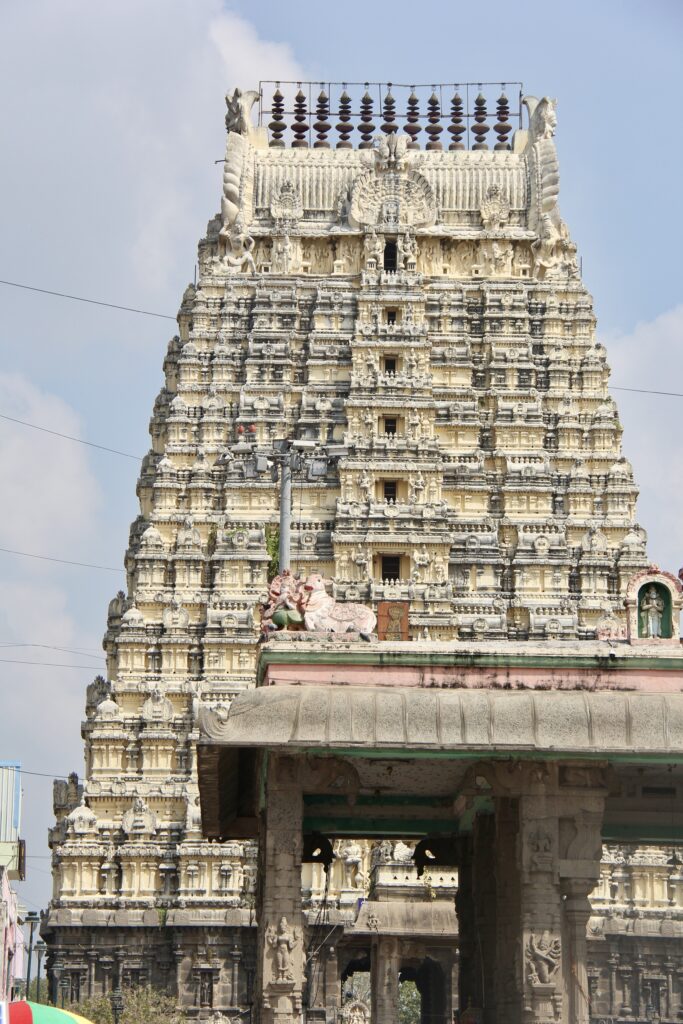
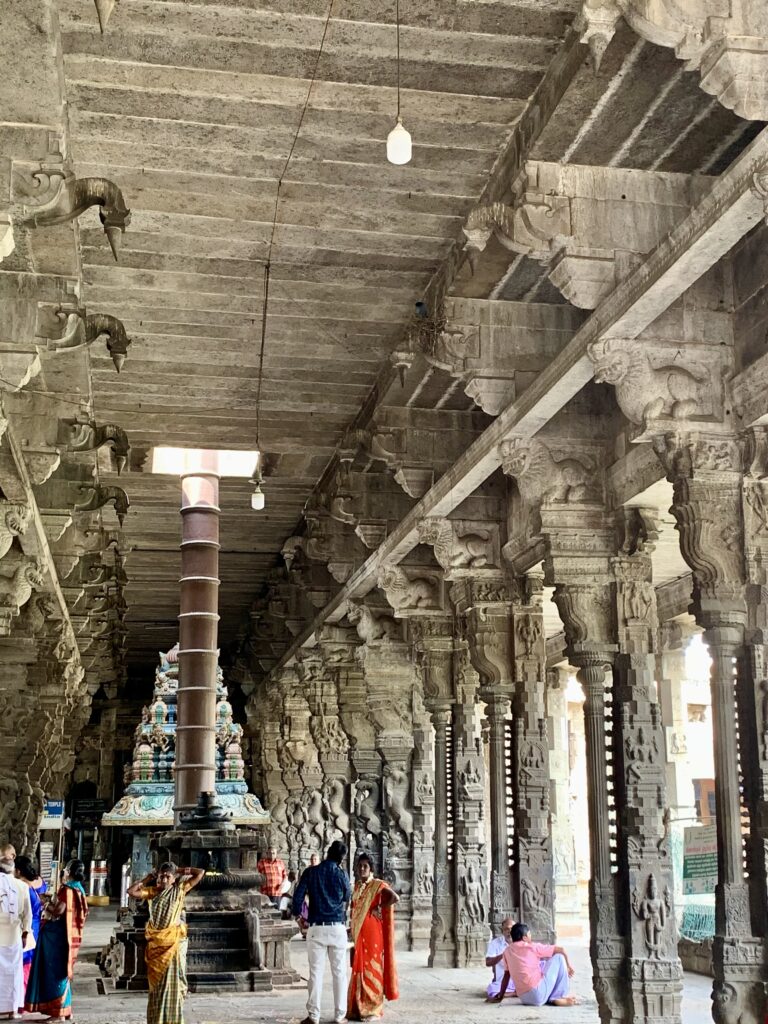
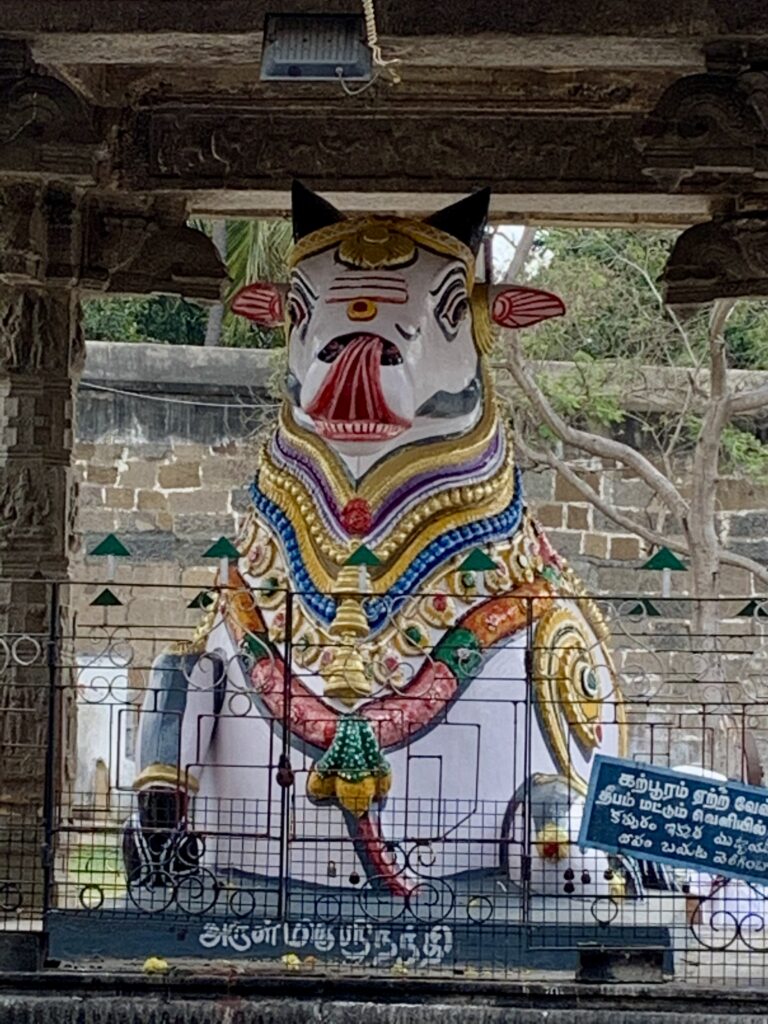
Kamakshi Amman Temple – has been in existence since the Pallavas in 6th century and modified by Cholas in 14th-17th century. The temple is dedicated to goddess Kamakshi (one of the many forms of Parvathi). The temple is also the center for the Kanchi Kamakoti Peetham. The Kamakshi temple complex covers an area of about 5 acres and has shrines of other gods and the Kolam (temple tank), all rich in architectural splendor and intricate carvings. The highlight of this temple was the beautiful and clean Kolam (tank) with small fountains.
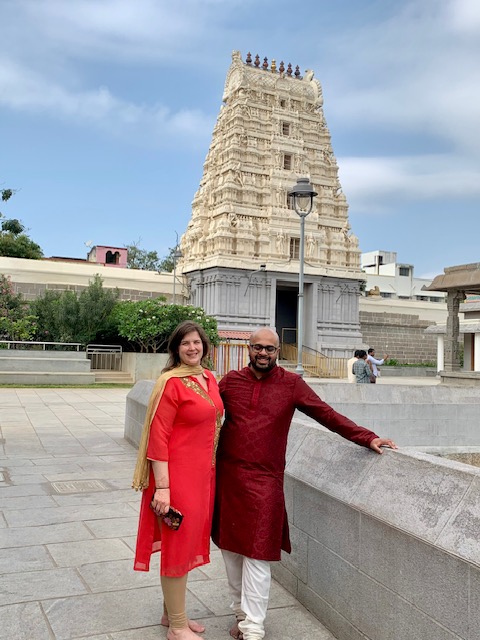
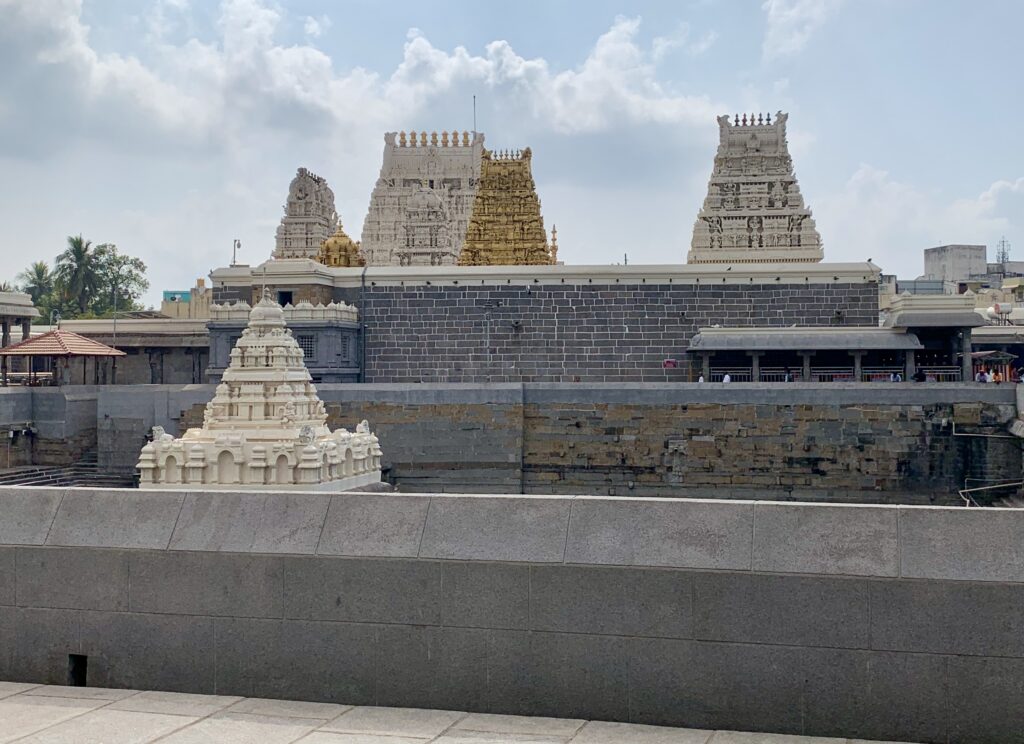
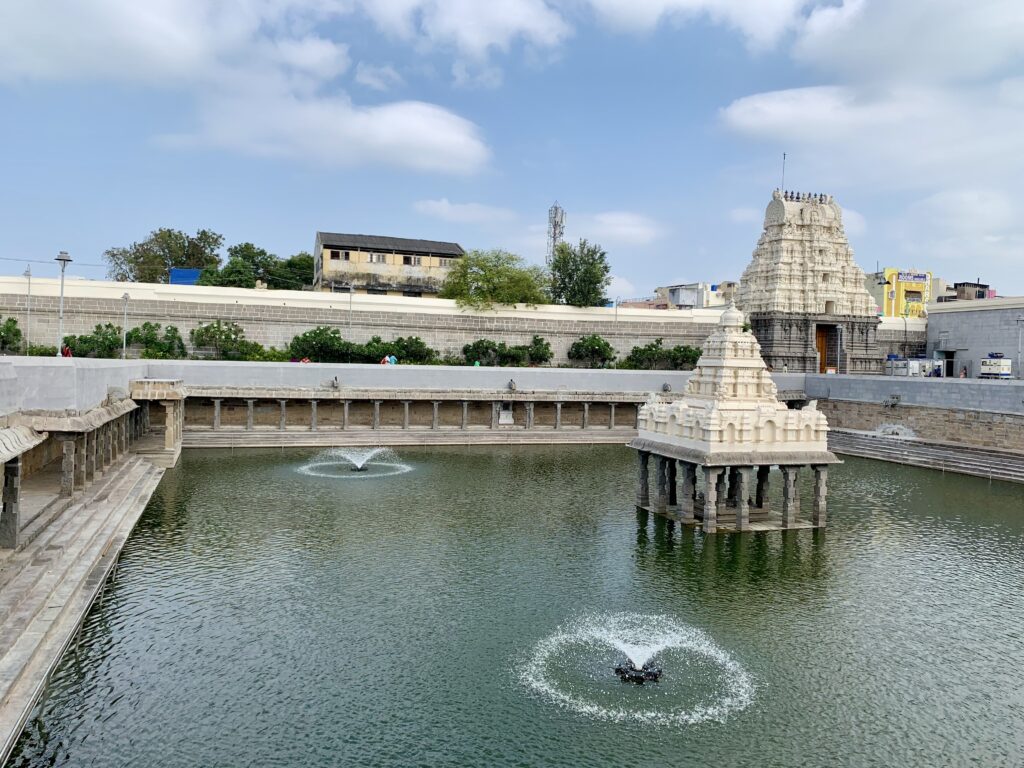
Varadharaja Perumal Temple – The original temple was built in 1053 by Cholas. It was later expanded during the reigns of the later Chola kings. The temple has around 350 inscriptions from various dynasties like Chola, Pandya, Cheras, Vijayanagara, etc.
The temple covers an area of 9.5-hectare (23.5-acre) and is one of the 108 Divya Desams (the holy abodes of Vishnu). The main sanctum faces west and can be entered through a 40 m (130 ft)-tall, 7-tiered Raja Gopuram (main gateway tower). Foreigners are not allowed into the temple.
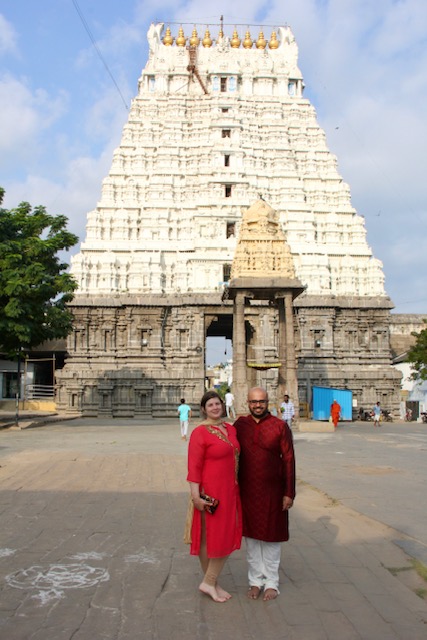
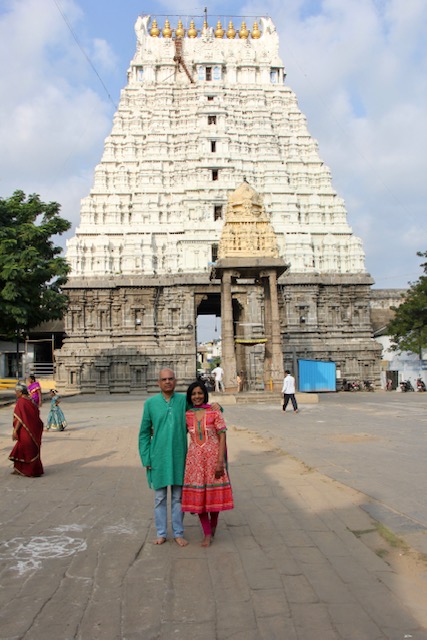
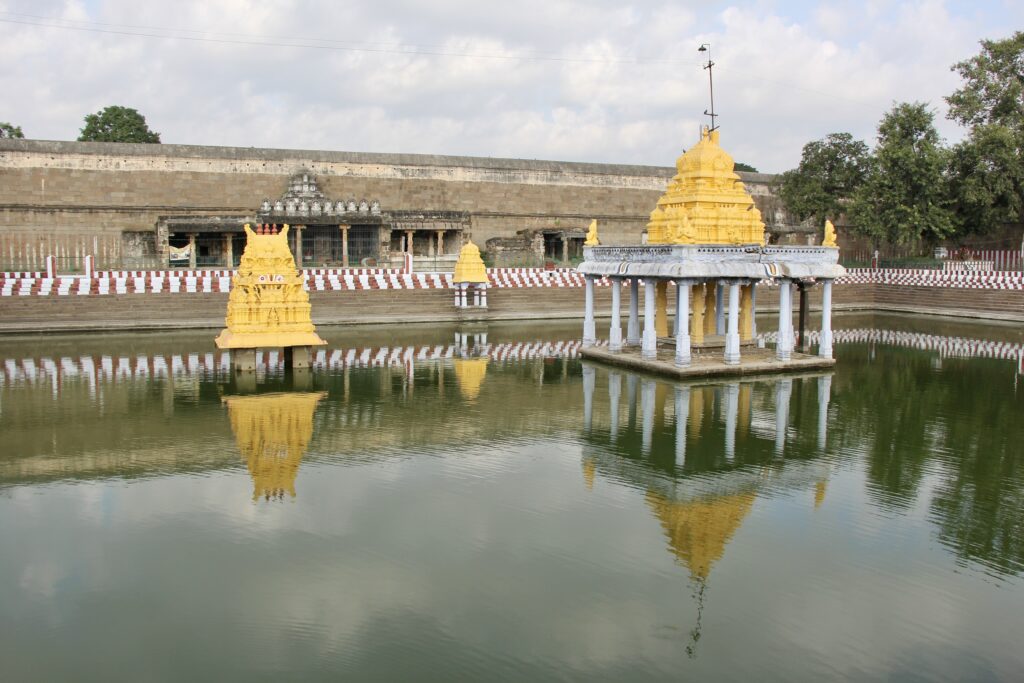
Chitragupta Temple – We made a quick 10 min stop at this small temple as I was curious to visit a temple dedicated to an accountant. Chitragupta, as per Hinduism is the accountant of Yama, the death god, who keeps track of good and bad deeds of human beings to decide their residence in heaven or hell.
Based on inscriptions, archaeologist have confirmed that the temple was built during the 9th century CE by the Cholas. During renovations out in 1911, two historical metal idols of Chitragupta and his consort Karnikambal were found. These images are housed in the central sanctum.
